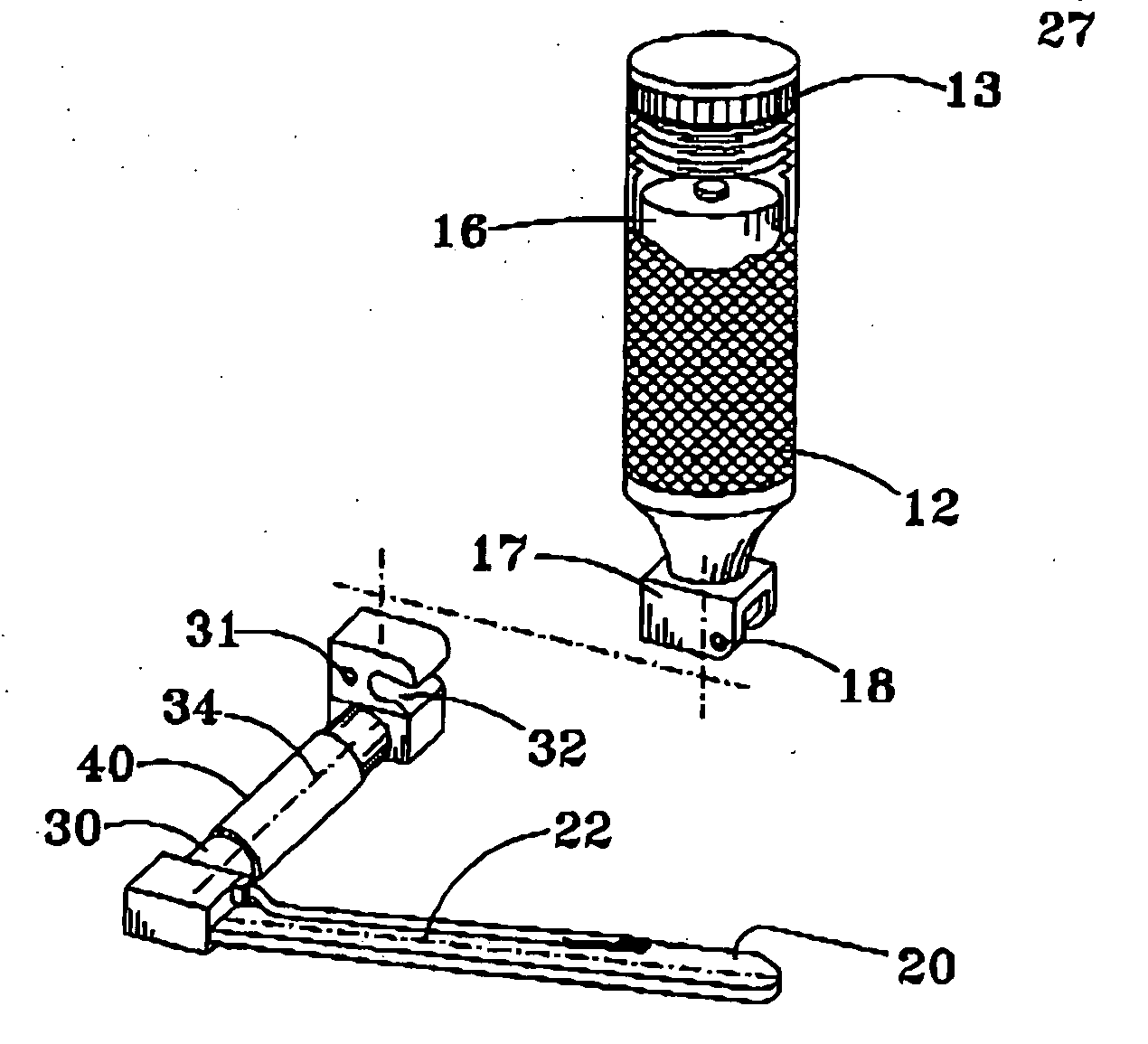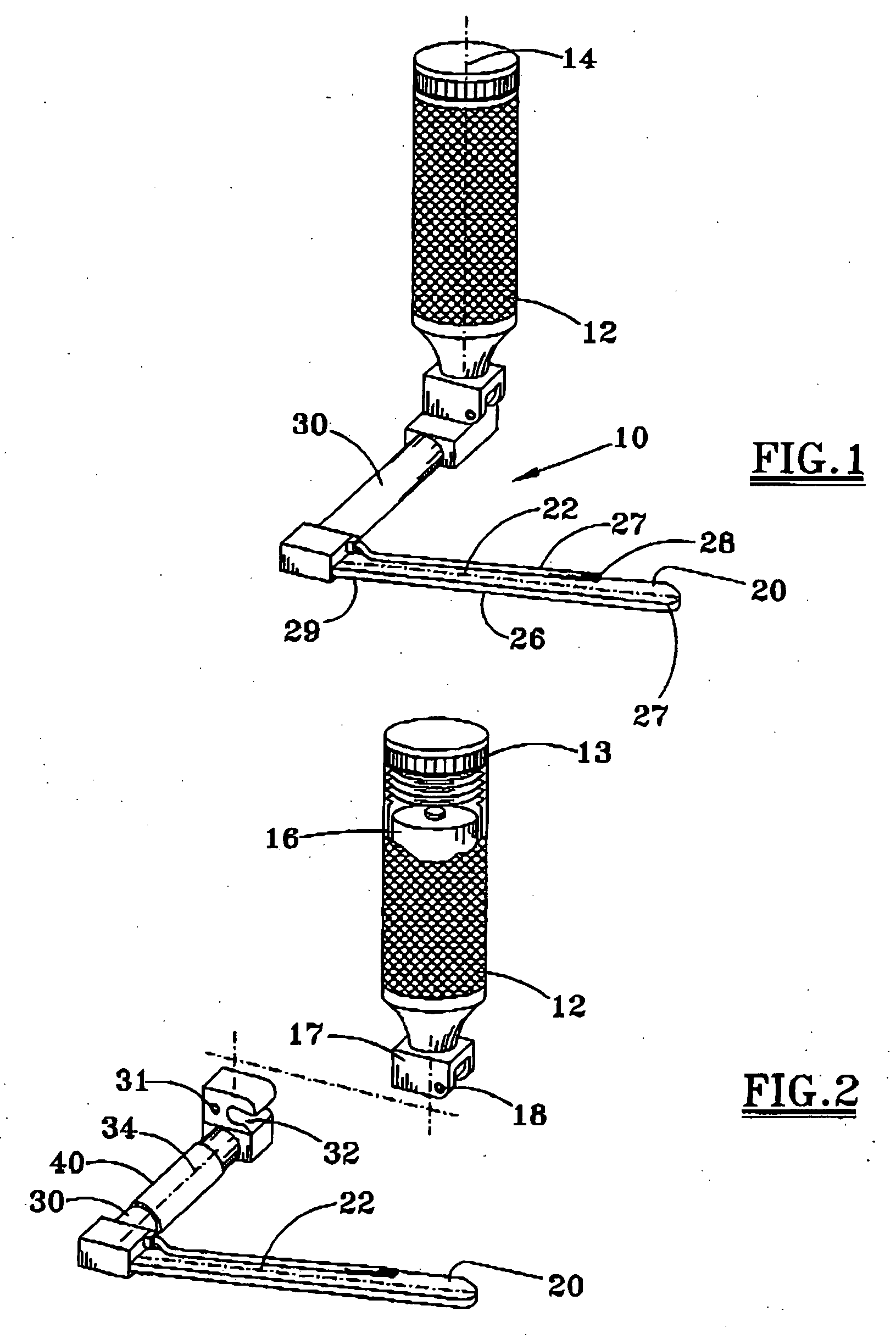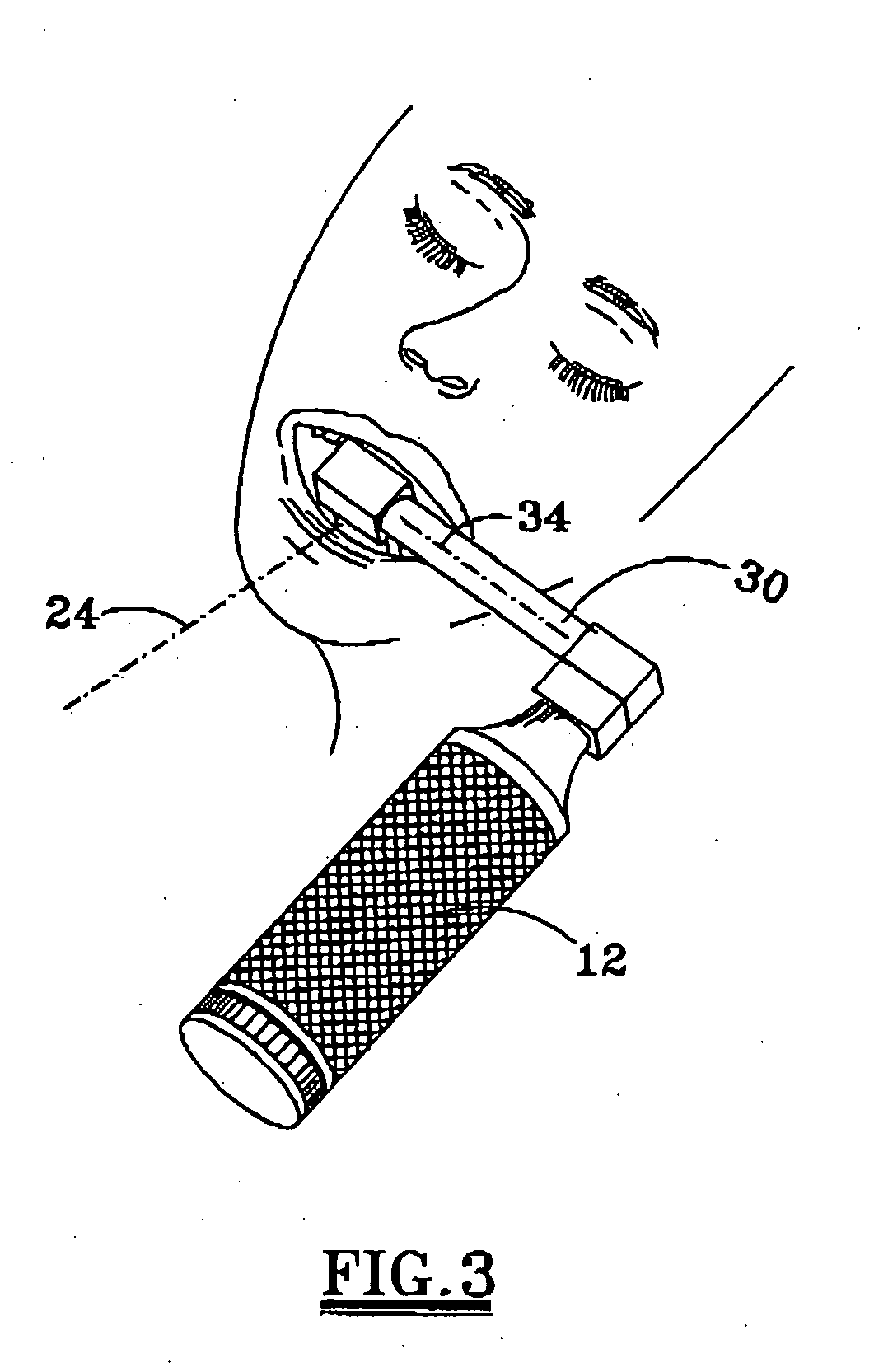Laryngoscope
a technology of laryngoscope and ophthalmology, which is applied in the field of laryngoscope, can solve the problems of cosmetic disfigurement, extensive restoration dentistry, and damage to the teeth of patients, and achieve the effects of reducing the risk of ophthalmology, and improving the quality of ophthalmology
- Summary
- Abstract
- Description
- Claims
- Application Information
AI Technical Summary
Benefits of technology
Problems solved by technology
Method used
Image
Examples
Embodiment Construction
[0013] Referring to FIG. 1, the laryngoscope 10 includes a conventional handle 12 having a generally cylindrical configuration for manipulating the laryngoscope blade 20. The handle 12 includes a handle axis 14, and conventionally includes a battery or other power source 16 (see FIG. 2) for illuminating an area adjacent the blade. An end cap 13 may be removed from the body of the handle to obtain access to the interior of the handle.
[0014] The elongate blade 20 is configured for insertion into the patient, and may have a relatively straight axis or a curved axis. In either event, the elongate blade axis 22 lies within a blade axis plane 24 (see FIG. 3) which is in use generally centered with respect to the mouth and throat of the patient. The configuration of the blade will depend on the desires of the practitioner and the physical characteristics of the patient. A substantially straight blade is shown in FIG. 1, although a blade with a curved axis may be used. The blade 20 general...
PUM
 Login to View More
Login to View More Abstract
Description
Claims
Application Information
 Login to View More
Login to View More - R&D
- Intellectual Property
- Life Sciences
- Materials
- Tech Scout
- Unparalleled Data Quality
- Higher Quality Content
- 60% Fewer Hallucinations
Browse by: Latest US Patents, China's latest patents, Technical Efficacy Thesaurus, Application Domain, Technology Topic, Popular Technical Reports.
© 2025 PatSnap. All rights reserved.Legal|Privacy policy|Modern Slavery Act Transparency Statement|Sitemap|About US| Contact US: help@patsnap.com



